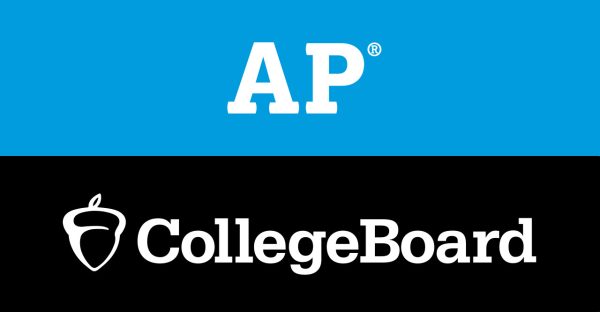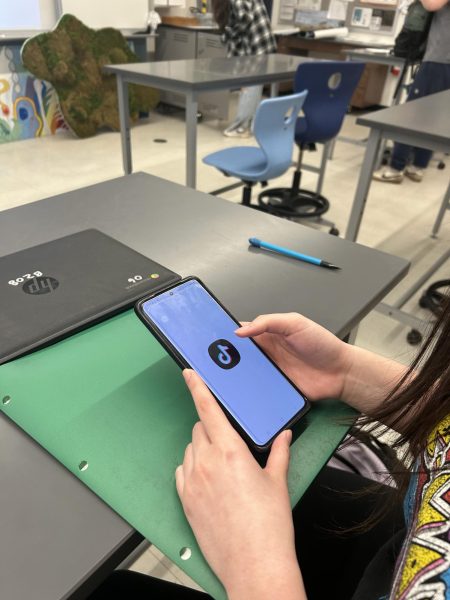Hybrid 2.0; A New Approach
West Hartford public schools have come up with a new school schedule known as the Hybrid 2.0. The goal of this approach is to allow students to receive more in-class learning time, and cover more content. However, opinions on this new approach remain controversial. Will this schedule contribute to the success of students’ academic performance, or are there still changes that need to be made?
West Hartford public school students and faculty members were asked for their input on the new school schedule, Hybrid 2.0. Although lots of time and effort was put into this new model, WHPS students had doubts and concerns regarding this new approach.
Hall High School senior, Jaqueline Bonee believes that the model “seemed more time demanding and very different from what we just had gotten used to. Although [Jaqueline] sees how it can benefit us [students] because it’s more time in the classroom ”. It is important to consider the fact that students all over the world have not been required to sit in an actual classroom for long lengths of time since March of last year. Therefore 1 hour class periods are an adjustment for all. This adjustment is harder for some students than others. Bonee’s main concern was that she will “end up being bored and not get [her] work done”. As previously mentioned, it is hard for students to pay attention and focus, especially because this has not been practiced for months. “It is almost as if we went from 0-100 real quick,” says Bonee. She ends the interview by sharing her hope that “staff will start to see how poorly it affecting us [students]. Maybe a new schedule will come out of this”.
Although there are some major concerns with the new West Hartford Hybrid 2.0 schedule, there are also some positive changes. For example, we will get to connect with the other half of our class virtually and it also gives us a sense of normalcy in our daily school schedule.
A teacher at Hall High School gave us her opinions on this new school schedule. Hall High School journalism teacher, Kelly Fransen expresses that she is “excited to have her classes somewhat back together and able to connect with each class as a whole”. Fransen thinks that going until 1:00 instead of 11:25 every day will give students more time with teachers which was a challenge with our Hybrid 1.0 schedule. A major challenge of Hybrid 1.0 was parents felt their children were getting limited time with teachers, both inside of school and online.
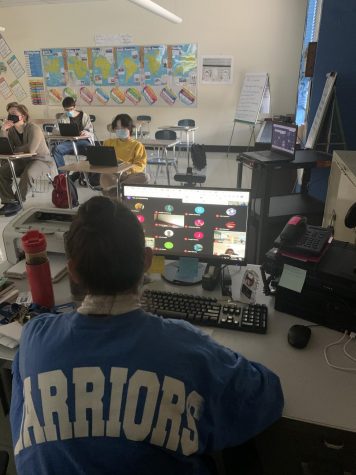
As the new school year approached, families were skeptical about the technicalities of the new Hybrid 1.0 schedule. Students were split up into two cohorts: red and blue. When the red cohort was in person, the blue cohort was online. However, the in-person group always had more time in school which escalated into one of the main reasons why the old schedule was a problem. The difference in pace led to confusion not only for students, but the teachers as well.
After 9 weeks of Hybrid 1.0, the new model was being talked about. Parents felt that their children weren’t getting the proper education and needed more than a 4-hour school day, and a 2-hour virtual one. Hall High school parent, Khen Raviv thinks “it will benefit the students because they will be more actively involved in the weeks that they are online”. Students are now live streaming into their classes starting at 7:30 am with the group that is in-person. This gives in-person students more time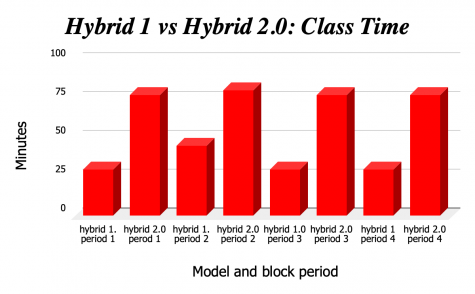
Graph visually representing the difference in class time in regards to Hybrid 1.0 versus Hybrid 2.0
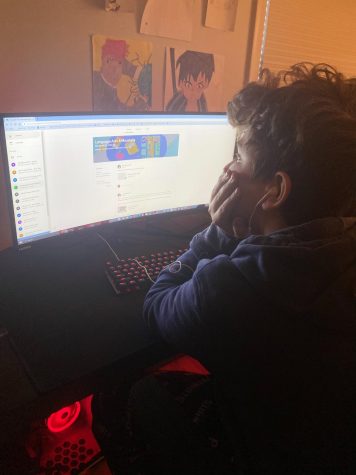
By extending the school day until 1:00 it gives students longer to meet with their teachers in order to get the help they need. Another benefit for online students is they will have two additional afternoon classes with their teachers. The two afternoon classes will each be only twenty minutes long and serve as a place for students to ask questions or get some additional help.



